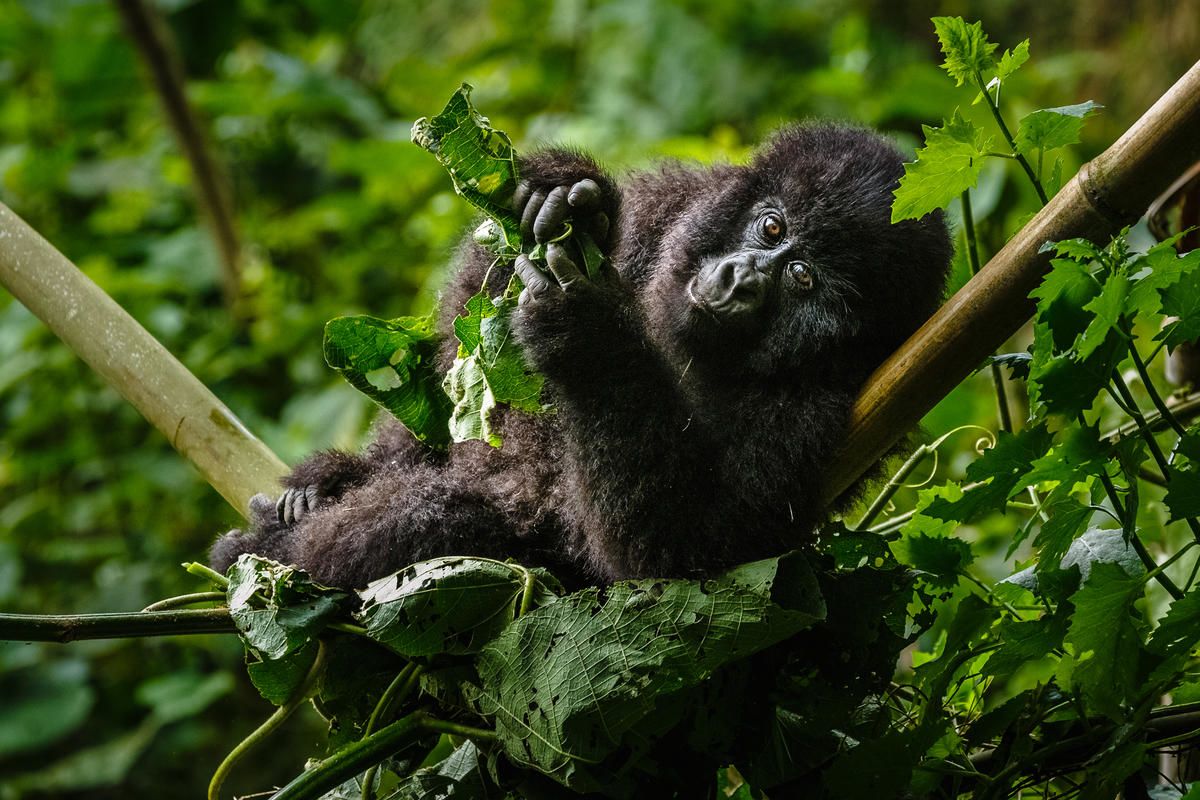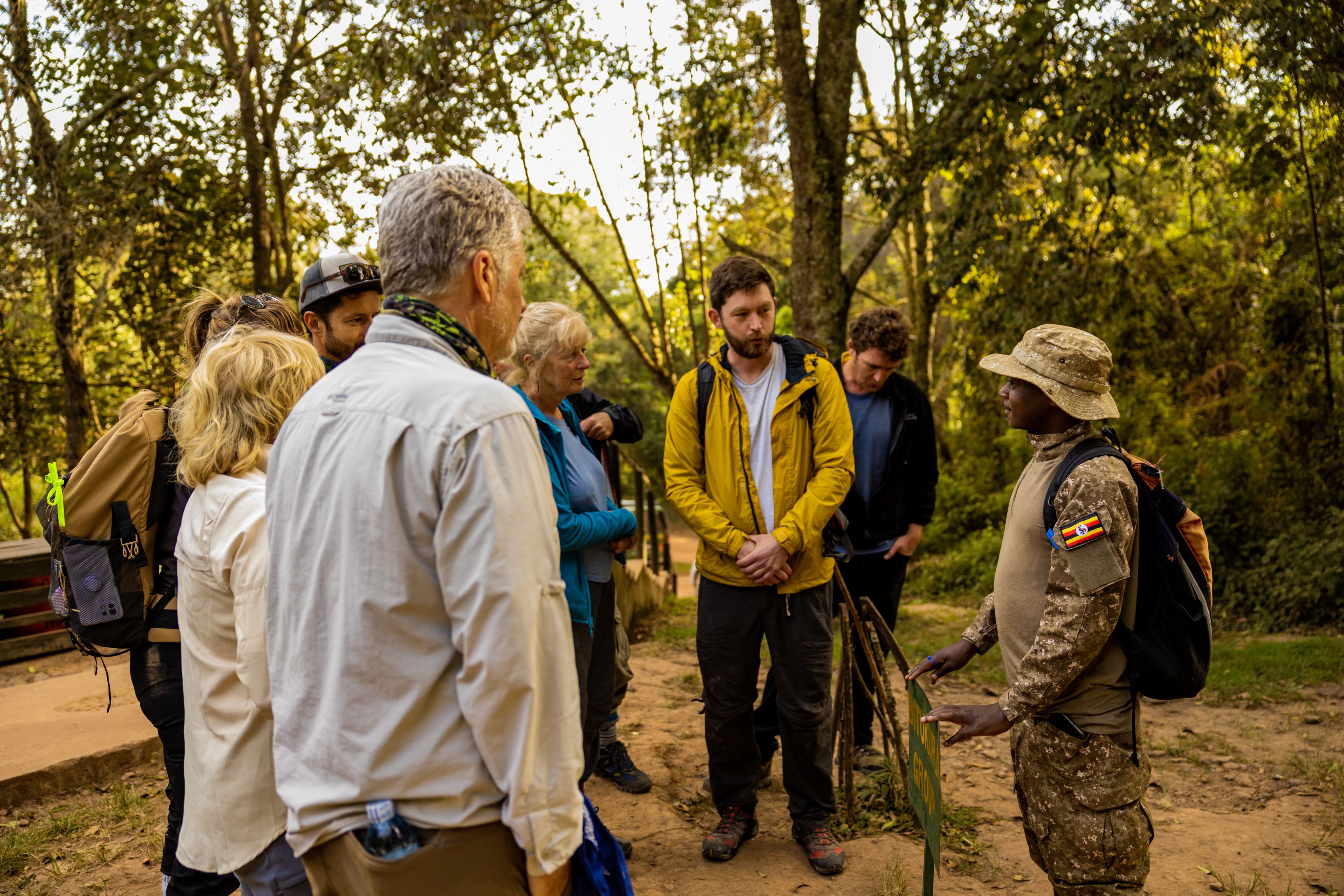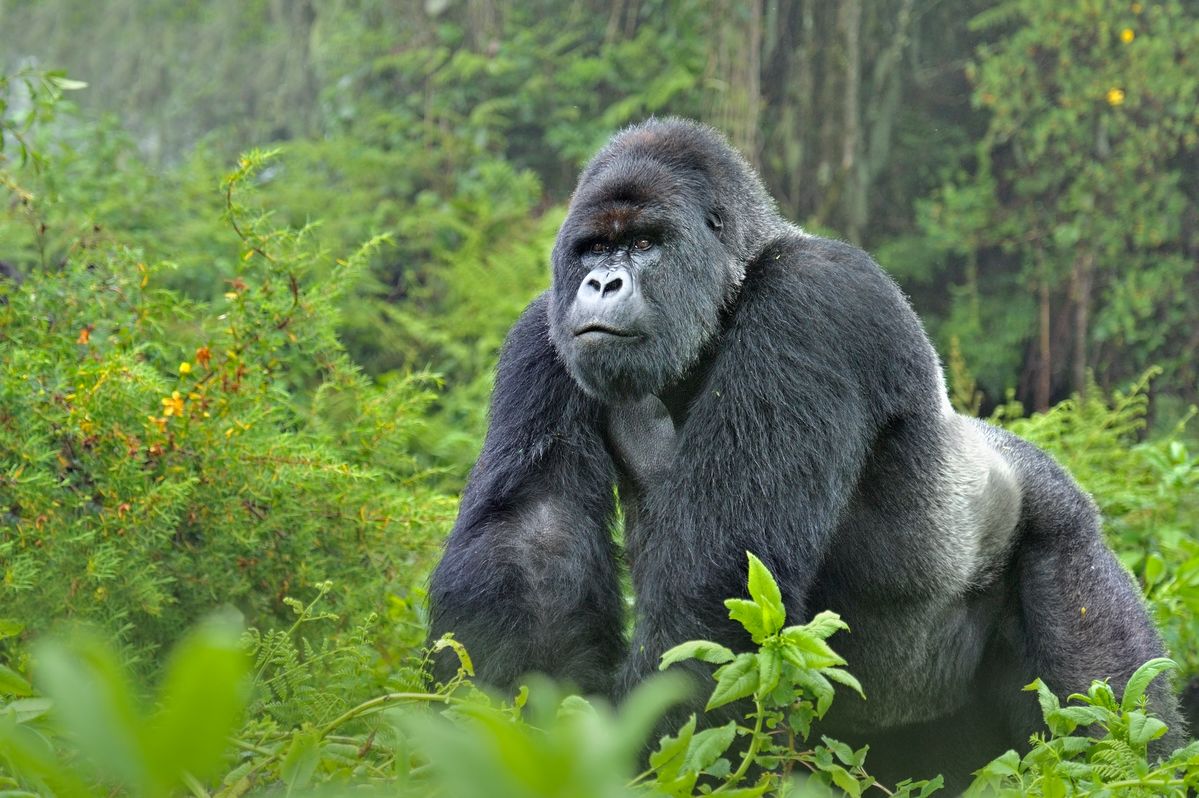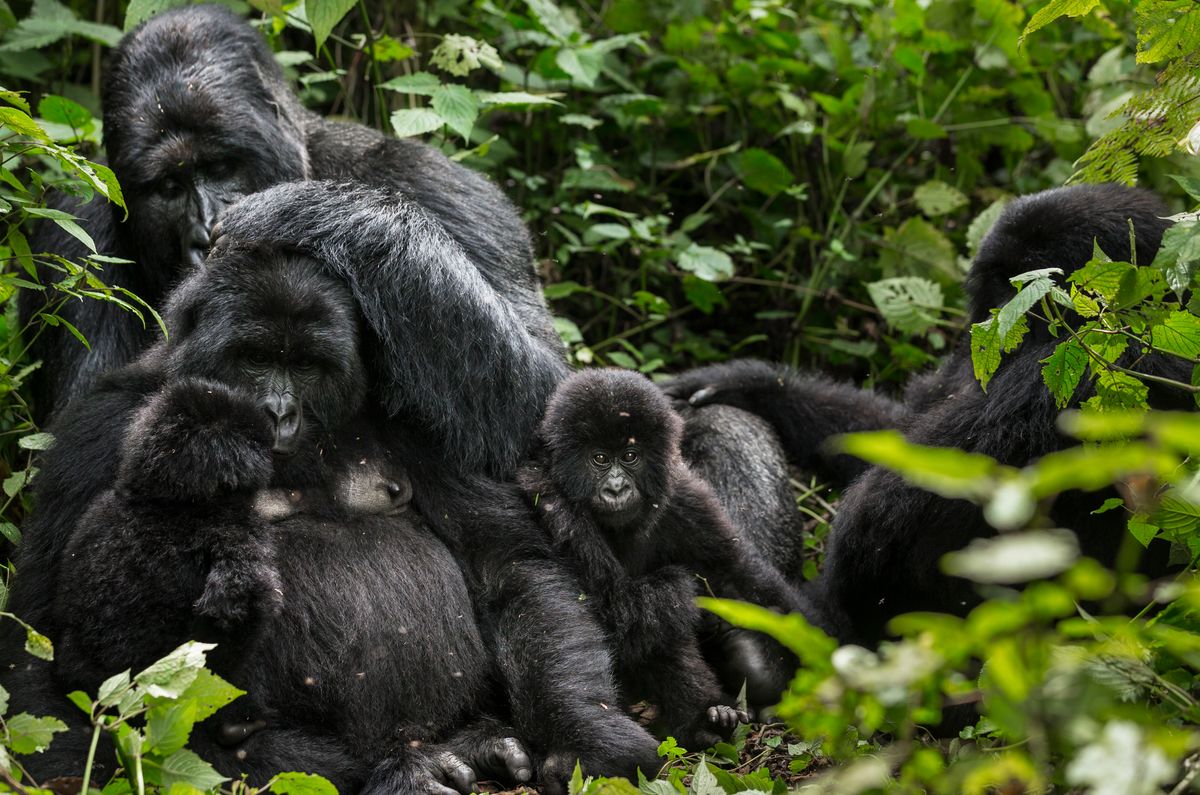IGCP 30 Year Impact Report
Chapter 4
Effective Conservation Tourism

Responsible tourism has become essential for mountain gorilla conservation.
- In Uganda, sales of US$700 tourist permits to see gorillas increased from 15,000 to 36,000 per year between 2011 and 2019.
- In Rwanda, gorilla tourism revenue was US$164 million in 2021 (10% of which goes to local communities) when some 512,000 mountain gorilla permits were sold to visitors to Volcanoes National Park.
By promoting responsible tourism practices that minimize impacts on gorilla populations, IGCP helps to ensure tourism will continue to support gorilla conservation efforts for years to come.
Conservation Benefits of Gorilla Tourism
Economic benefits
Tourism generates revenues that can be used to fund conservation efforts, such as anti-poaching patrols, habitat restoration and research. These revenues can also support local communities, creating incentives for them to protect gorilla habitat – and discouraging activities that are harmful to gorillas, such as poaching.
Increased Awareness
Tourism provides an opportunity for people to see mountain gorillas in their natural habitat, raising awareness about the importance of conservation and inspiring people to get involved in conservation efforts. This increased awareness can also lead to greater public support for conservation policies and funding.
Political Support
Tourism can also create political support for gorilla conservation. When tourists visit a country to see mountain gorillas, they are supporting the local economy and creating jobs, which can encourage governments to prioritize conservation efforts.
Community Involvement
Tourism can involve local communities in conservation efforts, creating opportunities for them to benefit from gorilla conservation. This involvement can create a sense of ownership and pride in the gorillas and their habitat, leading to stewardship.
Tourism Planning and Information
IGCP helped to prepare and implement long-term tourism development strategies, to guide investments in mountain gorilla conservation. The coalition has supported plans that embed mountain gorilla tourism practice standards at all levels:
- Transboundary level through the Virunga Massif Sustainable Tourism Development Plan (2005).
- Local government level in Kisoro and Kanungu Districts Nkuringo, Rubuguri and Buhoma Town Councils Tourism Plans
Community level (e.g.Nkuringo Tourism Development Plan). - IGCP designed and constructed a visitor centre in Mgahinga Gorilla National Park in 2006, which provides education and conservation awareness to visitors. Today, the centre remains an important arena for people to meet and continues to serve as a training facility for park staff and the community around the national park in Uganda.

Certified Gorilla Friendly™ Tourism
Between 2012 and 2015 IGCP collaborated with Wildlife Friendly Enterprise Network (WFEN) to develop the Certified Gorilla Friendly™ TOURISM ECOLABEL CERTIFICATION that has since become a flagship eco-standard for promoting and managing mountain gorilla tourism in the Virunga and Bwindi landscapes.
Certified Gorilla FriendlyTM tourism is a set of standards designed to ensure that all tourism value chain players conduct gorilla friendly businesses that do no harm to the mountain gorilla and its natural habitat. And that they promote and live within the set standards.
To enhance the performance of the certification, IGCP created The Gorilla Friendly™ Pledge initiative in 2014. This is an online awareness-raising campaign aimed at encouraging all those planning to visit the mountain gorillas to pledge to observe gorilla tourism rules during treks and to share feedback about their trekking experience through the Gorilla Friendly™ Pledge website – www.gorillafriendly.org The content of the pledge originates from existing great ape visiting rules and regulations, outlined in the IUCN Best Practice Guidelines for Great Ape Tourism.
I Pledge:
- not to approach Gorillas at less than 10 meters (33 feet) distance and proactively encourage the guide and other visitors to respect this rule.
- to turn and cover your nose and mouth with your shirt sleeve should you need to cough or sneeze during the visit.
- to wear a surgical mask while visiting the Gorillas in parks where this is mandatory, and dispose of it properly.
- to a maximum visit of one hour with Gorillas and proactively encourage the guide and other visitors to respect this rule.
- to ensure that the sounds, the flash and network reception on my electronic equipment are turned off.
- not to leave anything nor take anything from the forest and ensure that all of your gear is thoroughly clean at the start of each day.
- to inform your park guide that you have taken the Gorilla Friendly Pledge and will provide feedback on your visit to the Gorillas.
Achievements of the Pledge
- Trained over 200 tour operators & guides on the Gorilla FriendlyTM Pledge.
- Trained about 160 park rangers, guides & tourism wardens on the Gorilla FriendlyTM Pledge.
- Developed and disseminated over 1000 materials including brochures, car stickers, and posters.
- Media engagement with about 60 journalists in Uganda and Rwanda on the Gorilla FriendlyTM Pledge.
- Increased understanding and compliance of the gorilla visitation rules.
- Increased number of people taking the pledge from about 400 in 2018 to over 2000 pledges.
- New partnerships created – Rwanda Tourism Chamber.

Challenges and Lessons Learned
Given the significance of the income from gorilla tourism, the varied prices in each country and the fact that the animals cross international borders, the sharing of revenue from mountain gorilla tourism is a challenge. IGCP continues to strive for national commitments to coordinate gorilla tourism for the benefit of all.
Gorilla conservation is heavily dependent on tourism, so impacts such as the Covid-19 pandemic have reinforced the need for diverse funding sources to protect mountain gorillas.
The challenges and threats to mountain gorilla conservation have changed over the years. Previously, direct poaching of gorillas and encroachment of park boundaries were major threats. But today the non-compliance to best practices by tourists and park staff guiding visits to see gorillas is a particular cause for concern, owing to the increased risk of disease transmission. New strategies need to be developed for adaptive management to address emerging threats to gorilla conservation but also to take advantage of new opportunities.









